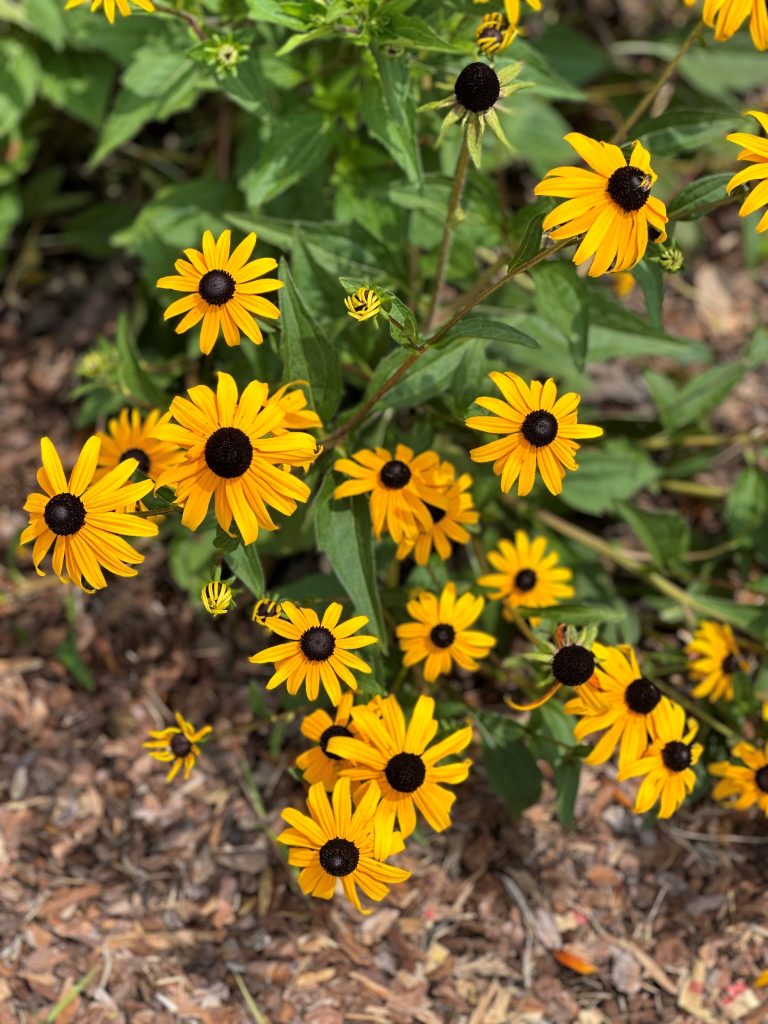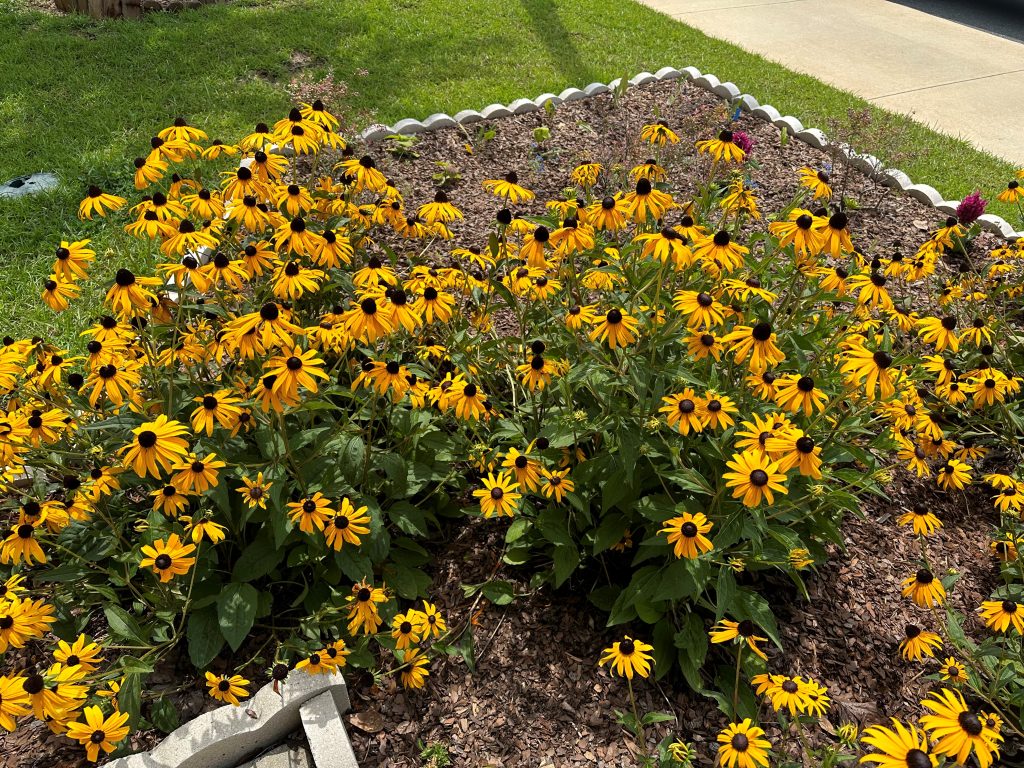Black-eyed Susan, Rudbeckia hirta, is a yellow wildflower commonly found throughout Florida. It is easily recognized by its golden yellow petals and dark brown center or its signature “black eye”. Not only is black-eyed Susan a beautiful addition to any landscape or garden, but it is also beneficial to pollinators and easy to care for! A win, win for gardeners alike!
As a native wildflower to much of the eastern and central United States, Black-eyed Susan plays an important role in supporting local ecosystems. It provides pollen and nectar to a wide variety of pollinators such as native bees, butterflies, hoverflies, and other beneficial insects. Its long blooming season provides a food source to support these species during the hot summer months when many other plants are not blooming.
One of the greatest appeals of Black-eyed Susan is its versatility. It can be grown in full sun and well-drained soil but will tolerate poor soil, drought and even some shade. After establishment, it requires minimal care and returns each year.
Growing Considerations:
- USDA Hardiness Zones 2-11
- Soil pH range: 6.0-7.2
- Soil tolerances: clay; sand; acidic; loam
- Plant spacing: 12 – 28 inches
- Moderate drought tolerance
- Flowering months: May – October
- Growth height: 1-3 feet
If you’re looking for a resilient, beautiful, pollinator-friendly flower that brings bold color during the summer and is easy to care for, Black-eyed Susan is a great option!
- 2025 Peanut Butter Challenge! - October 3, 2025
- Discover the Sweet Potential of Persimmons at the UF/IFAS Persimmon Field Day - August 28, 2025
- Black-eyed Susans Bring Bold Color and Easy Care - July 20, 2025


